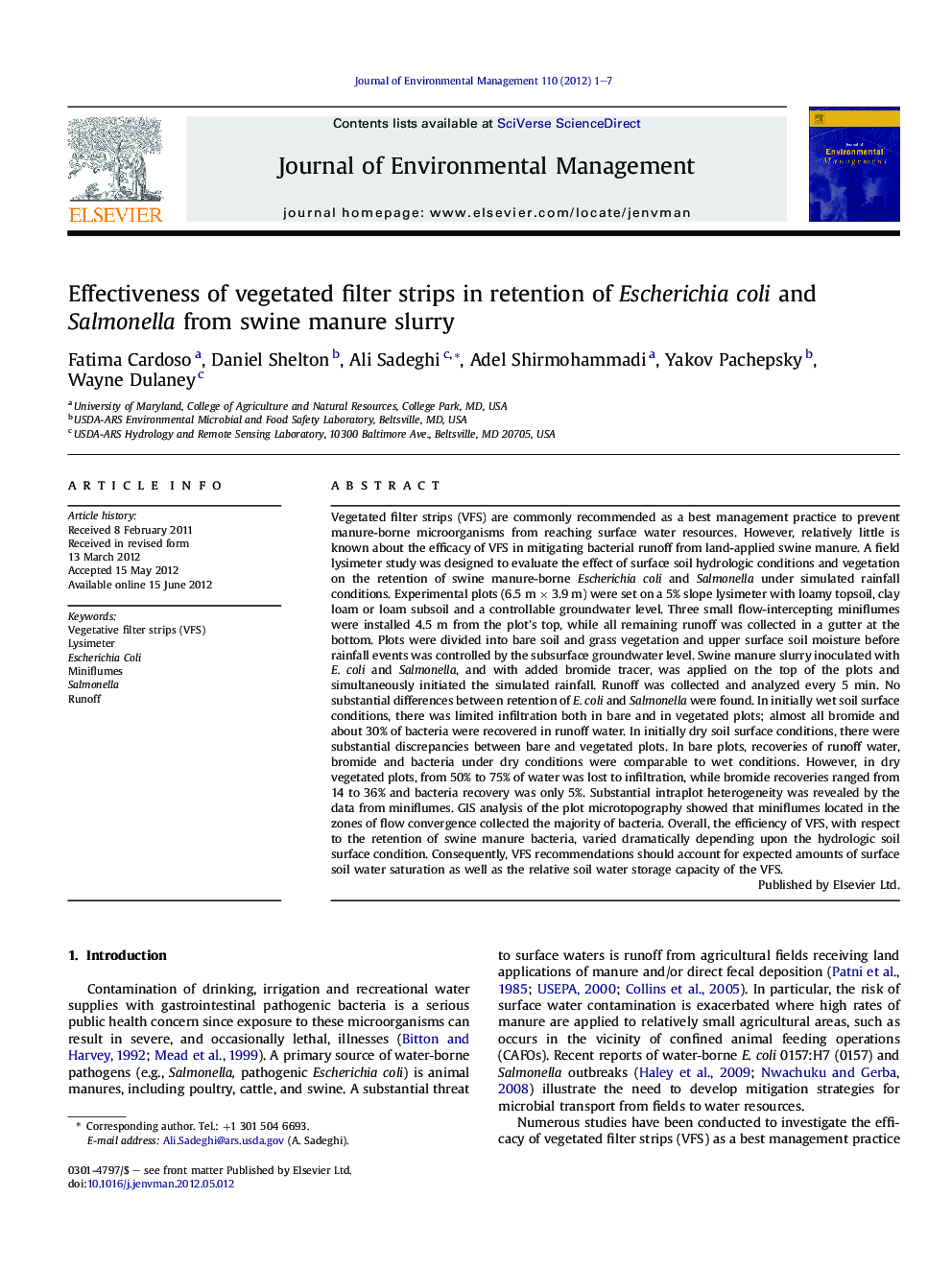| Article ID | Journal | Published Year | Pages | File Type |
|---|---|---|---|---|
| 1056500 | Journal of Environmental Management | 2012 | 7 Pages |
Vegetated filter strips (VFS) are commonly recommended as a best management practice to prevent manure-borne microorganisms from reaching surface water resources. However, relatively little is known about the efficacy of VFS in mitigating bacterial runoff from land-applied swine manure. A field lysimeter study was designed to evaluate the effect of surface soil hydrologic conditions and vegetation on the retention of swine manure-borne Escherichia coli and Salmonella under simulated rainfall conditions. Experimental plots (6.5 m × 3.9 m) were set on a 5% slope lysimeter with loamy topsoil, clay loam or loam subsoil and a controllable groundwater level. Three small flow-intercepting miniflumes were installed 4.5 m from the plot's top, while all remaining runoff was collected in a gutter at the bottom. Plots were divided into bare soil and grass vegetation and upper surface soil moisture before rainfall events was controlled by the subsurface groundwater level. Swine manure slurry inoculated with E. coli and Salmonella, and with added bromide tracer, was applied on the top of the plots and simultaneously initiated the simulated rainfall. Runoff was collected and analyzed every 5 min. No substantial differences between retention of E. coli and Salmonella were found. In initially wet soil surface conditions, there was limited infiltration both in bare and in vegetated plots; almost all bromide and about 30% of bacteria were recovered in runoff water. In initially dry soil surface conditions, there were substantial discrepancies between bare and vegetated plots. In bare plots, recoveries of runoff water, bromide and bacteria under dry conditions were comparable to wet conditions. However, in dry vegetated plots, from 50% to 75% of water was lost to infiltration, while bromide recoveries ranged from 14 to 36% and bacteria recovery was only 5%. Substantial intraplot heterogeneity was revealed by the data from miniflumes. GIS analysis of the plot microtopography showed that miniflumes located in the zones of flow convergence collected the majority of bacteria. Overall, the efficiency of VFS, with respect to the retention of swine manure bacteria, varied dramatically depending upon the hydrologic soil surface condition. Consequently, VFS recommendations should account for expected amounts of surface soil water saturation as well as the relative soil water storage capacity of the VFS.
► Unique studies for assessing Escherichia coli & Salmonella presence in swine manure slurry. ► Lysimeter studies showed VFS to be efficient for pollution control. ► Hydrologic conditions impact retention of swine manure E. coli & Salmonella. ► Bare and vegetated plots showed substantial discrepancies in pathogen transport. ► In bare plots, recoveries of pollutants under dry & wet conditions were comparable.
